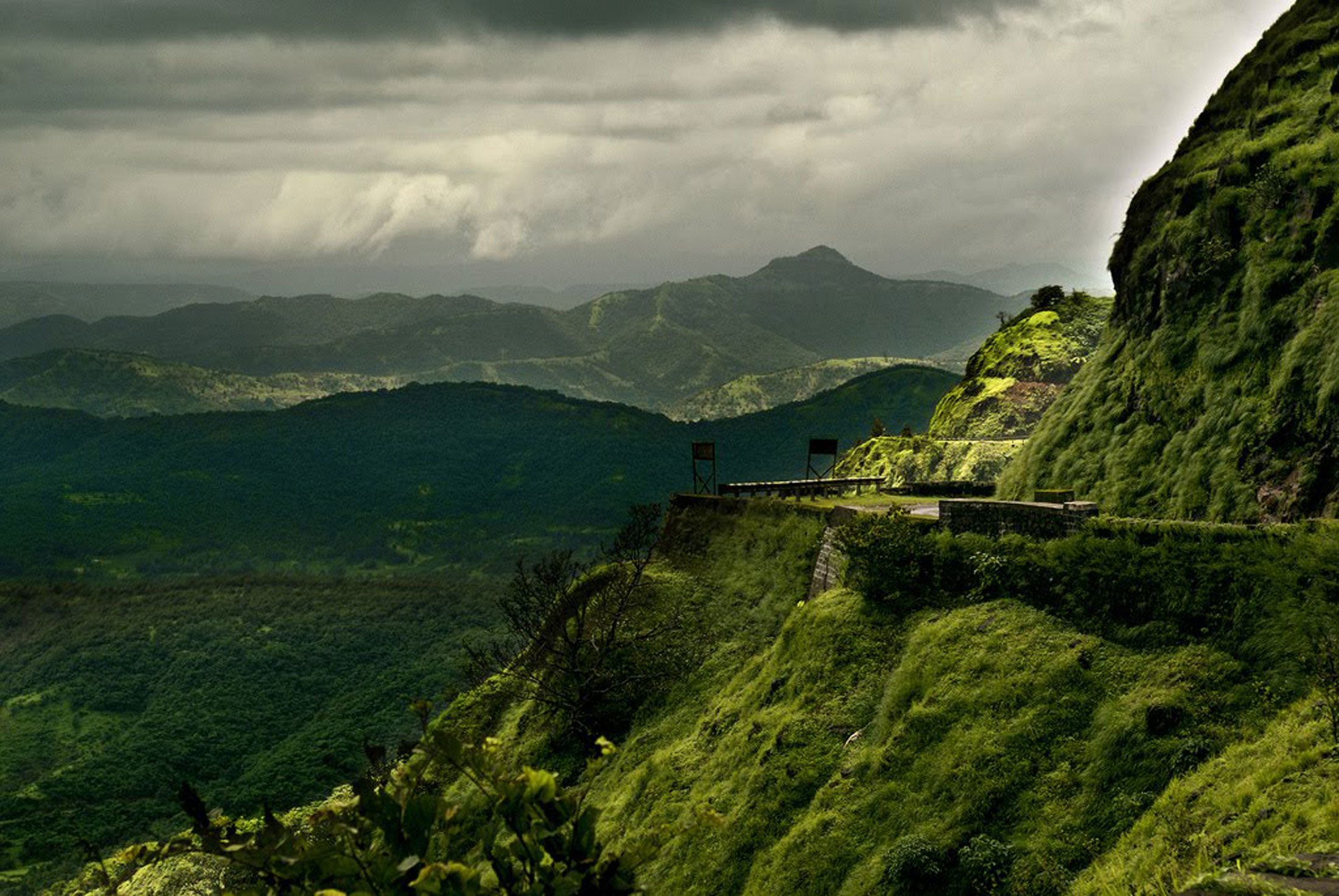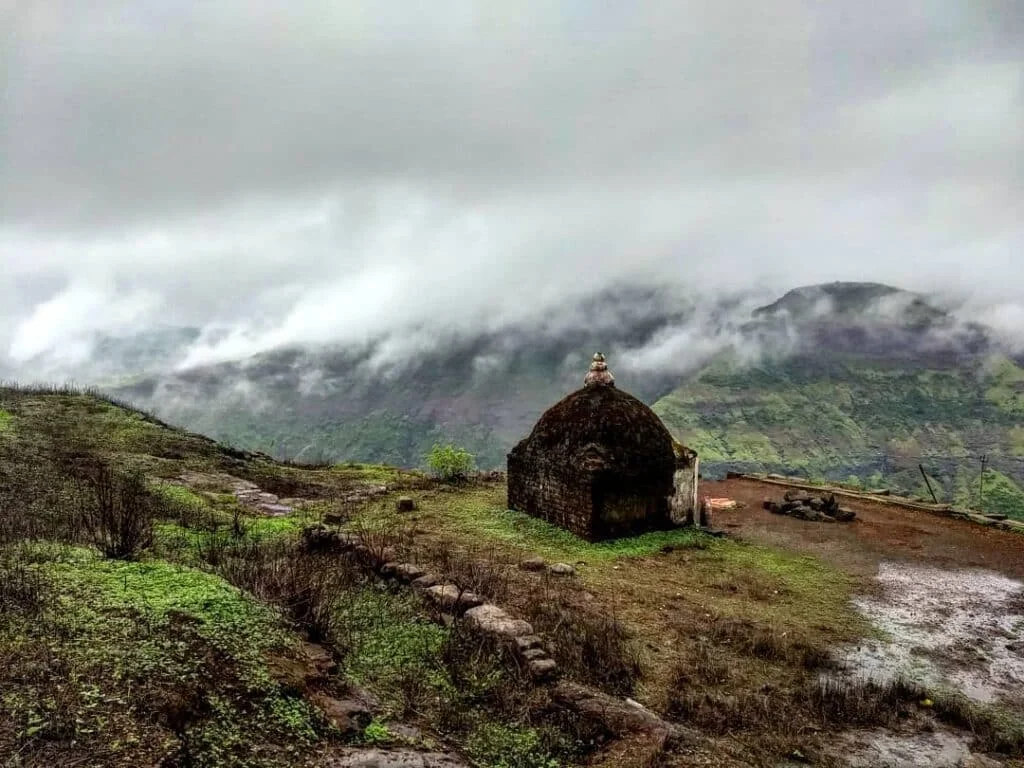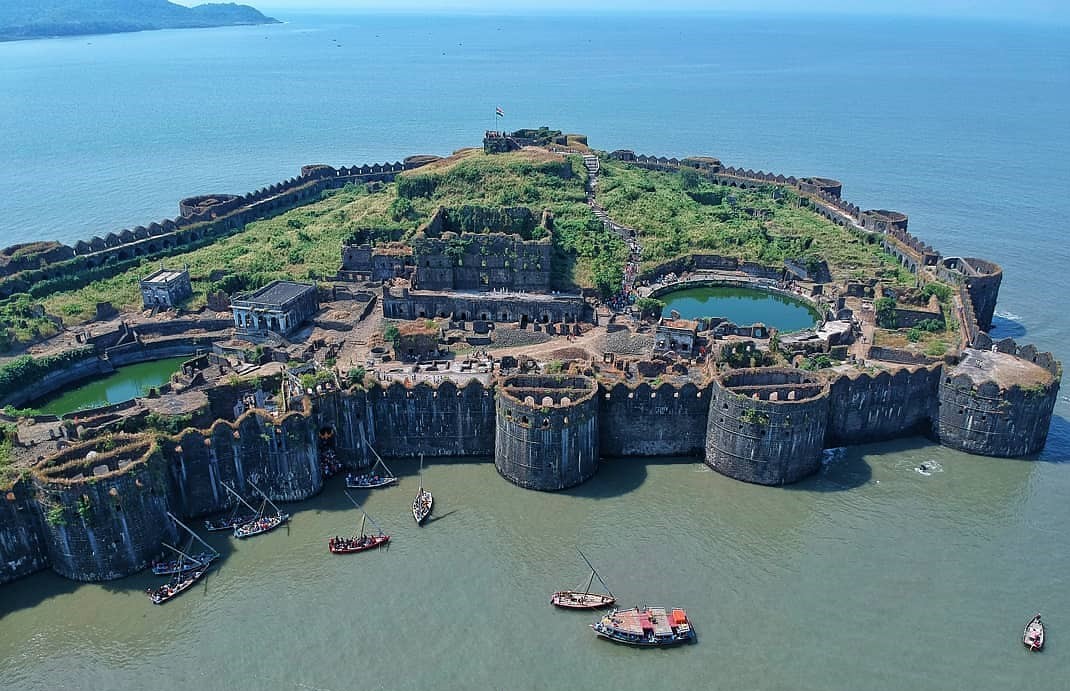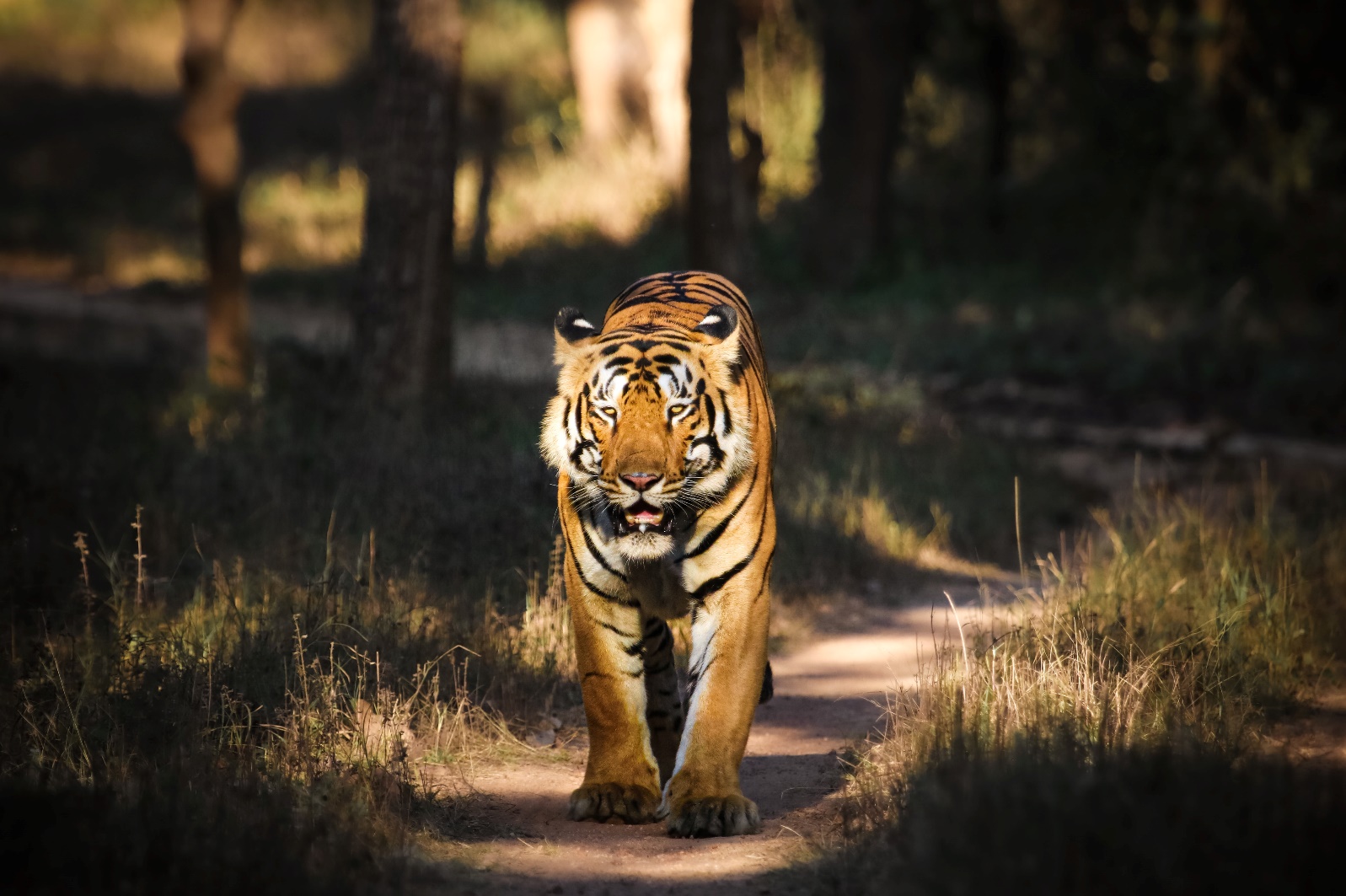
Mumbai, the bustling metropolis of Maharashtra, is often called the city that never sleeps—and for good reason. This vibrant city is a captivating blend of historic charm and modern ambition, where colonial-era architecture stands shoulder to shoulder with soaring skyscrapers. Mumbai’s iconic landmarks like the Gateway of India, the majestic Chhatrapati Shivaji Terminus, and the colorful Marine Drive coastline tell stories of its rich past and dynamic present.
As India’s financial capital, Mumbai pulses with energy—from the frenetic markets of Colaba and Chor Bazaar to the glitzy Bollywood film industry that shapes the city’s cultural heartbeat. Its streets teem with life, offering everything from bustling street food stalls serving vada pav and pav bhaji to upscale restaurants showcasing global cuisines.
Beyond the urban rush, Mumbai also offers serene escapes like the lush Sanjay Gandhi National Park, where you can trek to ancient Kanheri Caves, or stroll along the calm shores of Juhu and Versova beaches. The city’s vibrant festivals, lively nightlife, and diverse communities make it a melting pot of experiences and stories waiting to be discovered.
Best time to visit: November to February

Lonavala, nestled in the Western Ghats of Maharashtra, is a charming hill station that captivates visitors with its lush green valleys, mist-covered hills, and serene lakes. Famous as a weekend getaway from Mumbai and Pune, it offers a refreshing escape from city life with its cool climate and scenic beauty. The landscape is dotted with ancient forts, waterfalls, and dense forests, making it a haven for nature lovers and adventure seekers alike.
One of Lonavala’s biggest draws is its series of cascading waterfalls, especially during the monsoon season when the entire region turns into a vibrant green paradise. Attractions like Bushi Dam, Kune Falls, and the enchanting Tungarli Lake provide perfect spots for picnics and leisurely walks. The hill station is also popular for trekking, with trails leading to historic forts such as Rajmachi and Lohagad, offering panoramic views of the surrounding Western Ghats.
Beyond nature, Lonavala is renowned for its warm hospitality and local delicacies, especially its famous chikki (a traditional sweet made from jaggery and nuts). The bustling markets and cozy cafes provide an authentic taste of Maharashtrian culture, where visitors can shop for souvenirs and enjoy delicious food after a day of exploration.
The blend of natural beauty, cultural richness, and adventure makes Lonavala a versatile destination that appeals to families, couples, and solo travelers alike.
Best time to visit: October to June or July to September

Mahabaleshwar, perched atop the Western Ghats in Maharashtra, is a captivating hill station renowned for its breathtaking viewpoints, lush strawberry farms, and cool, refreshing climate. With panoramic vistas stretching over verdant valleys and shimmering lakes, this charming town has long been a favorite retreat for nature lovers and honeymooners alike. The winding roads lined with dense forests and misty hills create an enchanting atmosphere perfect for relaxation and exploration.
The region is dotted with famous viewpoints such as Arthur’s Seat, Elephant’s Head Point, and Wilson Point, each offering unique perspectives of the sprawling Sahyadri range and surrounding landscapes. Mahabaleshwar is also home to ancient temples, charming markets, and tranquil lakes like Venna Lake, where visitors can enjoy boat rides amidst serene surroundings.
A trip to Mahabaleshwar is incomplete without tasting its famed strawberries and fresh local produce. The bustling local markets are filled with vendors selling jams, preserves, and mouth-watering snacks made from these berries. For adventure enthusiasts, trekking, horseback riding, and nature walks through dense forests offer exciting ways to explore the area.
Mahabaleshwar’s mild weather and natural beauty create a perfect backdrop for rejuvenation, making it an ideal destination for families, couples, and solo travelers seeking peace and picturesque views.
Best time to visit: October to June

Panchgani, nestled in the Western Ghats of Maharashtra, is a serene hill station known for its cool climate, lush greenery, and stunning viewpoints. Famous for its colonial charm and sprawling strawberry farms, this quaint town offers a perfect blend of nature, history, and tranquility. The gentle hills and valleys create an idyllic setting, making Panchgani a favorite escape for families, honeymooners, and adventure seekers alike.
The town is home to several breathtaking spots such as Table Land—the second-longest mountain plateau in Asia—offering panoramic views and opportunities for horse riding and picnics. Other attractions include Sydney Point, Parsi Point, and the picturesque Lingmala Waterfalls, each adding to the natural beauty and peaceful vibe of the region. The surrounding forests and trails are ideal for trekking and nature walks.
Panchgani is also well-known for its local produce, especially fresh strawberries and traditional Maharashtrian cuisine. The vibrant markets and cozy cafes provide a warm and inviting atmosphere to relax and savor regional flavors after a day of exploring. With its laid-back charm and scenic vistas, Panchgani offers a refreshing retreat from the hustle and bustle of city life.
Best time to visit: October to June

The Ajanta and Ellora Caves, located near Aurangabad in Maharashtra, are two of India’s most remarkable UNESCO World Heritage Sites, showcasing ancient rock-cut architecture and exquisite artistry. Ajanta Caves, carved between the 2nd century BCE and 6th century CE, are famous for their stunning Buddhist murals and sculptures that narrate tales from the life of Buddha and Jataka stories. The caves’ intricate paintings, preserved over centuries, offer a mesmerizing glimpse into India’s rich spiritual and artistic heritage.
Ellora Caves, dating from the 5th to 10th centuries, present a unique blend of Buddhist, Hindu, and Jain monuments carved into a single hillside. The most famous among them is the Kailasa Temple, an architectural marvel that appears to be sculpted from a single rock, showcasing incredible craftsmanship and scale. The complex reflects religious harmony and artistic excellence, drawing visitors fascinated by its history and grandeur.
Both sites are set amidst scenic landscapes, adding to the spiritual and cultural ambiance. Exploring the caves is like walking through a living museum where art, religion, and nature come together. The tranquil surroundings and the ancient silence of these rock-cut marvels create a deeply reflective experience for visitors.
Best time to visit: October to March

Daulatabad Fort, located near Aurangabad in Maharashtra, is an imposing medieval fortress renowned for its strategic design and architectural brilliance. Built in the 12th century, this massive hilltop fort was once considered nearly impregnable due to its steep slopes, intricate fortifications, and cleverly designed defense mechanisms, including hidden traps and narrow stairways. The fort’s robust walls and formidable gates stand as a testament to the engineering skills of its builders and its historic importance in regional power struggles.
Inside the fort complex, visitors can explore ancient structures like the Chand Minar, a towering 30-meter-high minaret built to celebrate victory, as well as mosques, palaces, and underground tunnels. The labyrinthine pathways and secret passages reveal the fort’s military ingenuity, while panoramic views from the top offer sweeping vistas of the surrounding landscape. Daulatabad’s combination of history, mystery, and stunning architecture captivates travelers interested in India’s rich medieval past.
The fort also has a fascinating history involving rulers like the Yadavas, Mughals, and the famous Maratha king Shivaji, who once attempted to capture this formidable stronghold. Exploring Daulatabad Fort is like stepping back in time to an era of kings, battles, and strategic brilliance.
Best time to visit: October to March

Tringalwadi Fort, perched majestically atop a hill near Wada in Maharashtra, is a captivating historical site that offers a blend of adventure, history, and panoramic views. Dating back to the medieval era, this fort played a significant role as a watchtower guarding the trade routes connecting the coastal Konkan region to the interior. Its strategic location made it an important outpost for various dynasties, including the Marathas and the Mughals, who used it to monitor enemy movements and protect their territories.
The ascent to Tringalwadi Fort is an exciting trek through rugged terrain and lush greenery, rewarding visitors with breathtaking vistas of the surrounding Sahyadri hills and the vast plains below. Along the way, trekkers pass through dense forests, rocky outcrops, and small caves that add an element of mystery and exploration to the journey. The fort itself, though partially in ruins, still showcases impressive stone walls, gateways, and remnants of ancient structures that tell tales of its glorious past.
Inside the fort complex, you can explore a small temple dedicated to Lord Shiva and various water tanks carved into the rock, which once supplied water to the fort’s inhabitants. The blend of natural beauty and historical architecture creates a serene atmosphere, perfect for those interested in both nature and heritage. Photographers and history buffs find Tringalwadi a rewarding destination for capturing the essence of Maharashtra’s hill forts.
Today, Tringalwadi Fort is a popular spot for trekkers, history enthusiasts, and nature lovers looking for an offbeat adventure. Its relatively less crowded trails and stunning landscapes make it a peaceful escape from the hustle and bustle of city life.
Best time to visit: October to February

Murud Janjira Fort, perched majestically on an island off the coast of Murud in Maharashtra, is one of the most formidable sea forts in India. Built in the 15th century by the Siddis, this fort is renowned for its almost impregnable architecture and strategic location in the Arabian Sea. Surrounded by strong, high walls and bastions, it has withstood numerous attacks by powerful invaders, making it a symbol of resilience and maritime strength.
The fort’s unique setting—rising directly from the sea—offers breathtaking views of the surrounding waters and coastline. Inside, visitors can explore palaces, freshwater wells, and ancient cannons that whisper tales of naval battles and heroic defenses. The intricate design includes secret escape routes and hidden passages, showcasing the military ingenuity of its builders.
Murud Janjira is also steeped in history and legends, including stories of brave warriors and royal intrigues. Its blend of natural beauty, historical significance, and architectural marvel attracts tourists, history enthusiasts, and photographers alike. A boat ride to the fort is an adventure in itself, offering spectacular views of the sea and the fort’s impressive silhouette against the horizon.
Best time to visit: Movember to March

Tadoba National Park, nestled in the Chandrapur district of Maharashtra, is one of the oldest and most celebrated tiger reserves in India. Spanning dense forests, open grasslands, and winding rivers, Tadoba is home to a rich diversity of wildlife including the majestic Bengal tiger, Indian leopard, sloth bear, gaur, and a variety of bird species. Its lush landscapes provide an ideal habitat for these creatures, making it a hotspot for wildlife enthusiasts and photographers seeking thrilling safari experiences.
The park offers well-organized jeep safaris that allow visitors to explore its wilderness safely while spotting elusive wildlife in their natural surroundings. Early morning and late afternoon safaris provide the best chances to witness tigers and other animals in action. The varied terrain of Tadoba, from dense forests to wetlands, supports a vibrant ecosystem, creating unforgettable moments for nature lovers
Apart from its rich fauna, Tadoba is also known for conservation efforts that have significantly contributed to the revival of the tiger population. The park’s commitment to protecting endangered species makes it a crucial part of India’s wildlife heritage. Nearby tribal villages add cultural depth to the visit, offering insight into the traditional lifestyles intertwined with the forest.
The serene beauty of Tadoba is enhanced by its tranquil rivers and natural waterholes, which attract animals throughout the day, creating excellent wildlife-watching opportunities. The park’s rich birdlife, including colorful species like the Malabar pied hornbill and crested serpent eagle, adds to the vibrant atmosphere. Whether you are a seasoned wildlife photographer or a casual nature lover, Tadoba National Park offers an immersive experience that connects you deeply with India’s wild heart.
Best time to visit: October to June

Kedareshwar Cave Temple, nestled near the scenic hill station of Mahabaleshwar in Maharashtra, is a hidden gem that combines spirituality with natural beauty. Carved into the rocky hillside, this ancient cave temple is dedicated to Lord Shiva and offers a tranquil retreat away from the bustling town. The cave’s simple yet serene interior, adorned with a Shiva lingam, invites devotees and visitors to experience peace and contemplation amidst nature.
Surrounded by lush greenery and overlooking panoramic views of the Sahyadri hills, the temple provides a refreshing escape where spirituality and nature harmoniously coexist. The approach to the cave involves a short trek through forested paths, adding an element of adventure to the visit. Its peaceful ambiance makes it an ideal spot for meditation and quiet reflection.
The Kedareshwar Cave Temple is not just a religious site but also a testament to the region’s rich cultural heritage and ancient rock-cut architecture. Visitors often combine their trip here with sightseeing around Mahabaleshwar, making it a perfect addition to any itinerary seeking a blend of history, spirituality, and natural beauty.
The temple’s location amidst the rolling hills and dense forests adds to its mystical charm, making every visit feel like a journey into a serene, timeless world. As sunlight filters through the trees and dances on the rocky walls of the cave, visitors often find a deep sense of calm and rejuvenation. Kedareshwar Cave Temple is truly a peaceful sanctuary that offers both spiritual solace and a connection to the natural beauty of the Western Ghats.
Best time to visit: October to March
